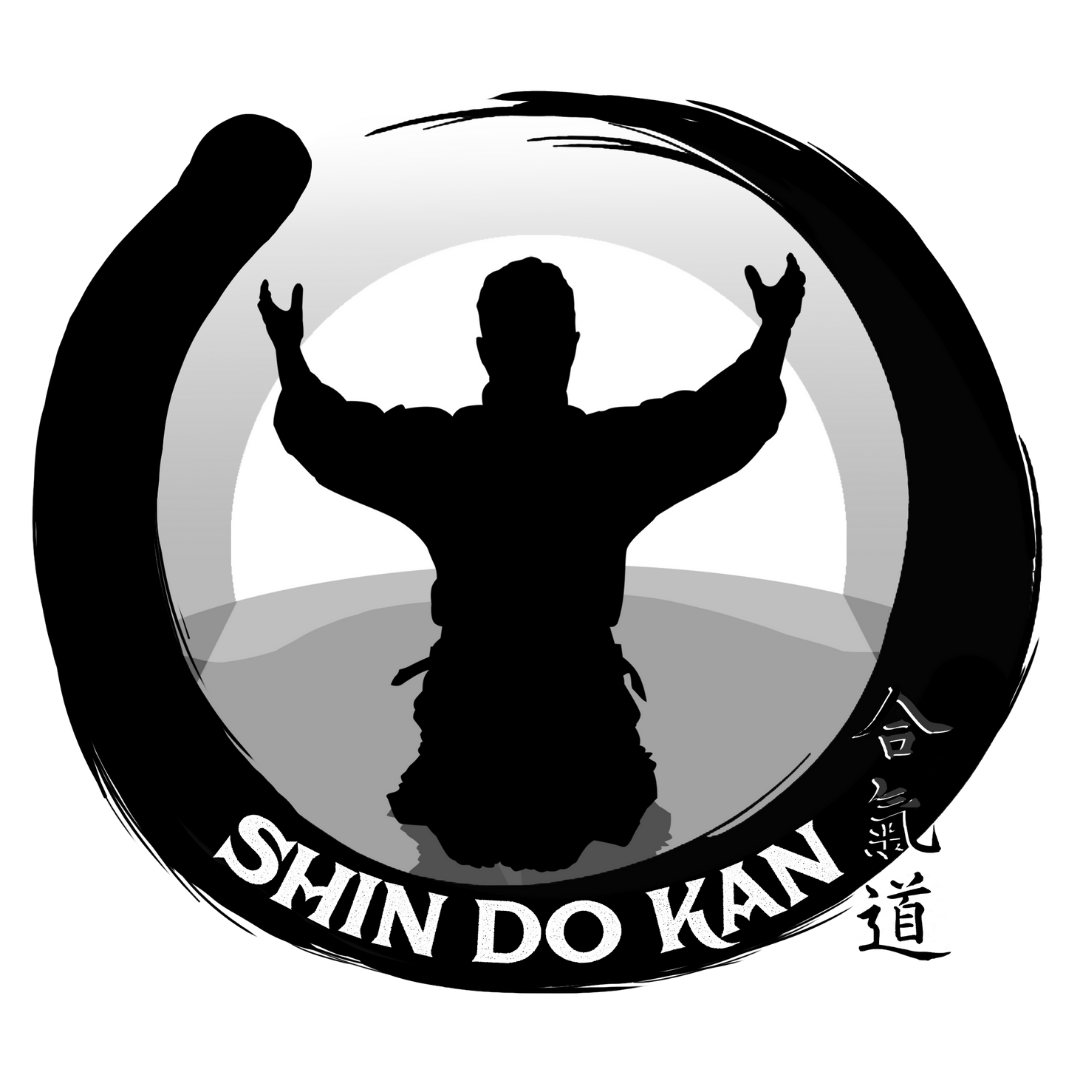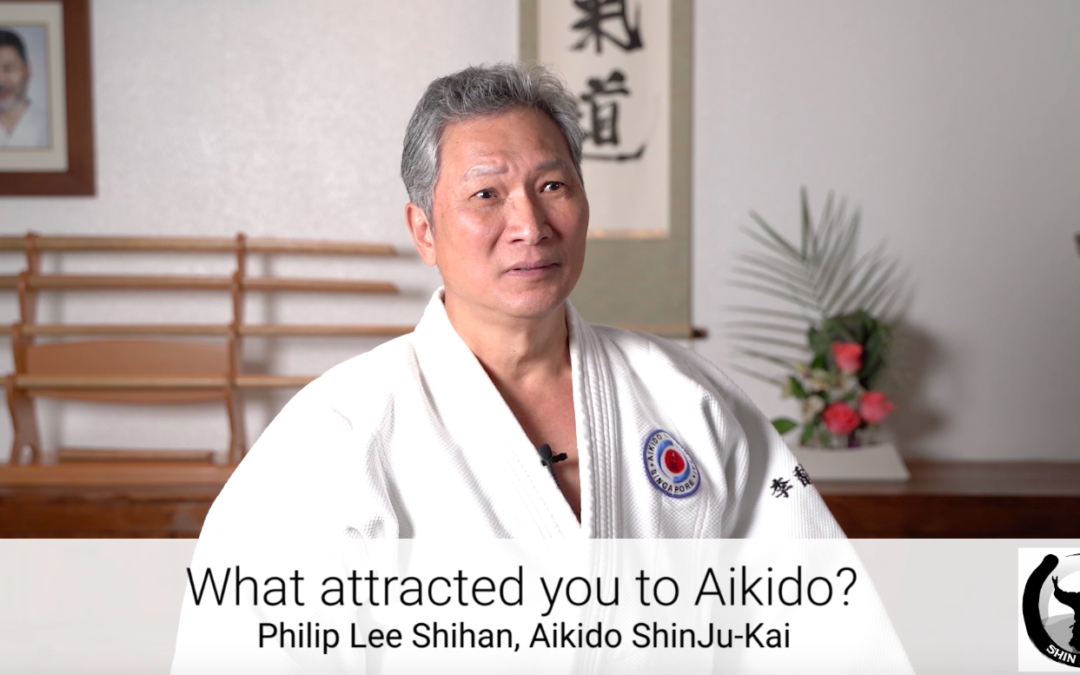At the 9th Annual Sugano Shihan Summer Camp, Philip Lee Shihan of Aikido ShinJu-Kai joined Newport Beach Aikikai for two days of intensive aikido training and building strong friendships.
We are very honored to have Philip Lee Shihan share his passion for Aikido in an exclusive interview at our dojo. Thank you Lee Shihan for taking the time to answer our questions as you continue to spread Aikido throughout Singapore and beyond.
What attracted you to aikido?
I was brought up in a family with 8 other sisters, and being the only “son” in the family, you can imagine how much “rivalry” I have back at home. As a young boy then, my decision to pick up a martial art has always been a necessity – to be able to “protect” myself.
Then again, it was the “Bruce Lee Era”! Many of my peers including myself was drawn into martial arts. Hence my journey into the world of martial arts begun at the age of 9 years old.
Personally, I started off with Chinese Wushu and then I did 4 years of Judo before moving on to Taichi, Karate and Kodachi Goshindo (defense against weapons attack – now widely known as Sports Chanbara) for the next 3 decades. I started Aikido at the age of 17.
It was through my Judo instructor back in those days that I have observed the very first Aikido class. Immediately, I was attracted to the gracefulness of Aikido as well as the philosophy of Aikido. The way the movements are executed, the way how a partner can be easily thrown off effortlessly and as well as the effectiveness and practicality of every lock.
Tell us about your training in Hombu. How has it prepared you for your journey through aikido?
Imagine being trained at the era where both Miyamoto Shihan and Yokota Sensei were then the uchideshis at Hombu Dojo, under the late Doshu, Kisshomaru Ueshiba.
Trainings were tougher back in the old days. Not only was training physically demanding, the entire concept of being an uchideshi is truly what makes and differs one practitioners from another.
From the daily cleaning of the Hombu dojo, to the maintaining of the cleanliness and tidiness of the Hombu dojo, to training at least 5 classes a day and finally in ensuring that every Shihans and Senseis are well taken care off is something that encompasses more than just “training”.
Being at the Hombu dojo, not only literally means immersing oneself in the philosophy and cultural heritage of Aikido but to actually live as a real Budo practitioner.
On how it has prepared me for my personal journey through Aikido. Upon my arrival back to Singapore after my period at the Hombu dojo, You can imagine how pumped up I was. Immediately, I wanted to evolve the Aikido scene to the same standard as the Hombu dojo.
Revising the way some of the classes were taught previously in Singapore, implementing new initiatives as well as developing a system for our students to fully absorb the culture of “budo” in the dojo. Revising old policies, implementing new rules and guidelines in Singapore.
Which instructors were most influential to your aikido experience?
The instructor who was most influential to my Aikido was the late Doshu, Kisshomaru Ueshiba and Kisaburo Osawa Shihan – they are fluid and graceful in their movements, yet very effective in breaking one balance and in control at all times. On the other hand, I also like the direct and practicality of Sadateru Arikawa Shihan, and they all are always kind and friendly once they are off the mats.
How has aikido changed since you started?
Aikido to me has changed tremendously in 2 ways. Both in the promotion of Aikido throughout the world as well as the way Aikido has been practiced today.
In Singapore, Aikido back in the days were sacred. Meaning, one will not be able to “simply” walk into the dojo to observe the training not even mentioning, being allowed to train in a class. In short, if one does not have an invitation prior to their arrival to the dojo he or she will not be allowed in. Aikido then, were unheard off, with merely only a handful of practitioners then.
Today’s Aikido has truly evolved. In Singapore, Aikido Clubs and training Centre can literally be found from a stone’s throw away. Today, Aikido Shinju-Kai has 56 training centers in Singapore and with more than 30 affiliated training dojos scattered all-over South-East Asia.
In terms of style of Aikido, then and now. I guess, alike any dojo in the world. This is a topic that has been debated for a very long time. Where Old meets New and where tradition is broken to make room for new ideas and practices.
I can’t say Aikido has not changed. The way I was taught to the way I teach my own students and to the way my instructors teaches to their students differs from individual to individual. Each differs tremendously from one to another.
Each Shihan and Sensei have their own understanding and perception of what Aikido is to them and it is through their techniques can we see their understanding and what they wish to share with us.
So going back to how Aikido have changed In Singapore. The only thing I can say that this is the beauty of Aikido, with its unique characteristics and philosophy that defines from individual to individual. The only thing I emphasize to all my instructors is to never forget their roots. The fundamentals that makes up Aikido as well as the basics of techniques that can be developed and evolved continuously.
You are doing the friendship seminars internationally. Tell us about how it started. What do these seminars mean to you?
The friendship seminar you see today is called the International Friendship Seminar. Then, it was not called so, it was referred as “The Big 3 Seminar” which started in United Kingdom in 1999. The 3 most senior and respected Senseis in United Kingdom, namely Haydn Foster Sensei (Institute of Aikido), William Smith Shihan (United Kingdom Aikikai) and Tom Moss Sensei (Yama Arashi).
It was then, that I was invited and got acquainted with The Big 3 seminar as a special invited guest in the late 2000’s. Over the years in the passing of these senseis, one of the senior instructor, Frank Burlingham Sensei took over the responsibility and role. Soon, the seminar finds itself with a shift of initiative, the then “Big 3 Seminar” now involves the main participation of 3 countries – UK, Canada (Toronto) and Singapore.
Being uncomfortable with the term “Big 3” then. I proposed that the seminar name to be renamed to “International Friendship Seminar” where there is the possibility of having more countries participating in time to come as well as building more of such “international bridges” to bring more aikido practitioners together.
On what it mean to me. The international friendship seminar has always been a good avenue in uniting people together as well as for practitioners and students to cross train between countries. Not only is it a good way of promoting Aikido locally and internationally, but also a good exposure for each country’s teachings and culture. In short, bringing people together through Aikido. As to date, we have added Belgium and likely another Aikido group from Japan from this year.
Tell us about your relationship with Gentil Pennewaert Shihan.
I first met Gentil’s Shihan through a seminar in Australia. Then it was the 40th Anniversary of AikiKai Australia with Seiichi Sugano Shihan.
Looking back, getting to know Gentil Pennewaert Shihan
How has your visit been so far in California?
One word – Memorable!
Our visit to CA has been more than welcoming. Not only was the seminar well organized from head to finish, but from the day we arrive till today, the experience has truly been memorable.
Philip Lee Shihan
Gentil Pennewaert Shihan and his wife – Charn Pennewaert would go out of their way to constantly ensure that we felt just right at home. Ensuring that we are well taken care of. This truly shows the welcomeness and openness that Gentil Shihan has and it’s a clear reflection of how he has been brought up under the guidance of Sugano Shihan.
These meticulous cares that he, his wife and students have shown during this period, truly resonates indeed shows us how his dojo is run.
Tell us about your involvement with the army and the police force? What is the SAFRA Tampines?
Aikido Shinju-Kai first collaborated with the Singapore Police force, The Gurkhas Contingent and The Singapore Armed Forces (The Guards Units) in 1999. We customized and tailored Aikido classes to meet specific needs and requirements of each division. I was extremely honored to be issued a 10-years contract period with the army and police force in just the first collaboration.
SAFRA means “Singapore Armed Force Reservist Association” and Tampines is the town area where my first independent dojo was located back in 1988. It was one of the key milestones in my Aikido journey.

